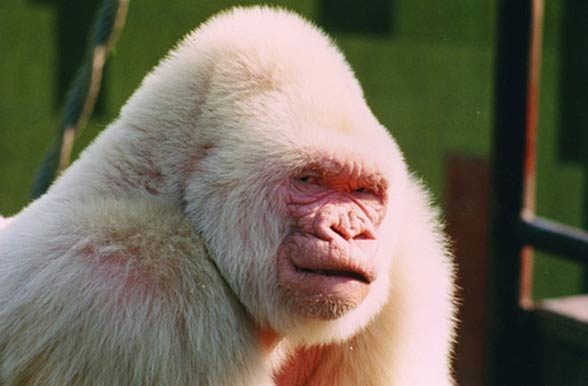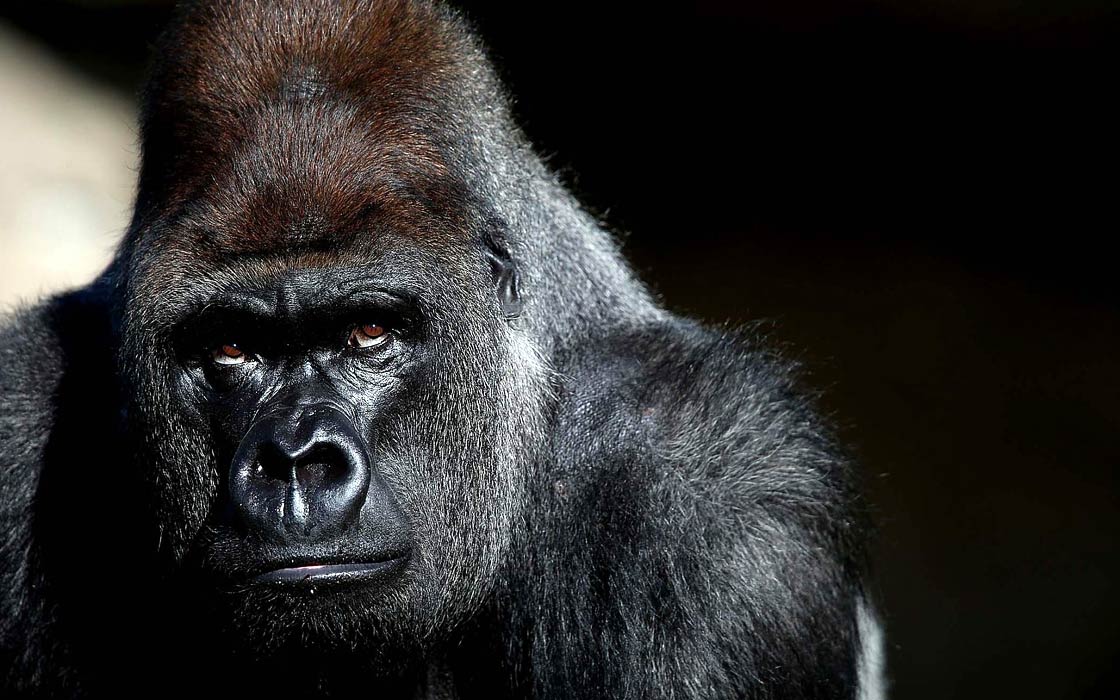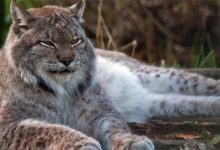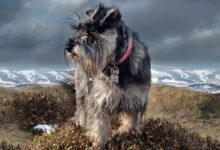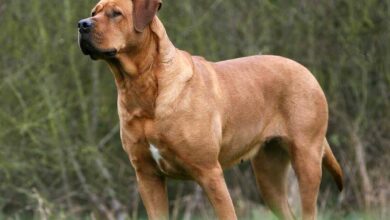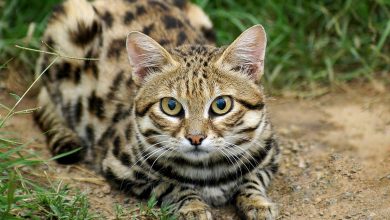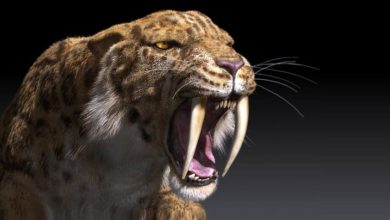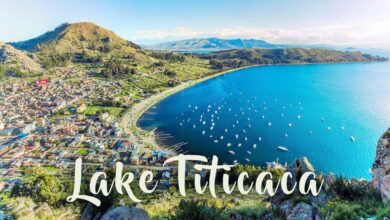Gorilla – the largest monkey* on Earth
Gorilla is the largest monkey in the world. Big, massive mouth and size make it seem very dangerous. However, it is just pretense – in fact, it is a very gentle animal. Gorilla is a herbivorous animal and lives in tropical forests in Africa.
Are you ready to meet the largest monkey (ape) on Earth? Imagine a creature that shares from 95 to 99% (depending on what is included) of its genetic code (DNA) with humans, making it our closest cousin after chimpanzees and bonobos (Pan paniscus). A gentle giant with broad chests and shoulders, large, human-like hands, and small eyes set into hairless faces. This is the gorilla, the largest of the great apes, weighing up to 230 kg (507 pounds) and standing up to 1.8 m (6 feet) tall.
Gorillas are interesting creatures that display many human-like behaviors and emotions, such as laughter and sadness. They are also incredibly intelligent and have been observed using tools in the wild. Unfortunately, gorillas are facing many threats, including habitat loss, poaching, and disease. Only about 1,000 mountain gorillas remain in the wild, making them critically endangered. But there is hope. Conservation efforts, such as those led by the World Wildlife Fund and the African Wildlife Foundation, are working to protect these amazing creatures and their habitats. So, let’s learn more about gorillas and how we can help protect them.
* Actually, gorillas aren’t monkeys at all! They belong to the family of great apes, which also includes chimpanzees, bonobos, orangutans, and humans. So, we should write “Gorilla – the largest ape on Earth”
Classification
- Kingdom: Animalia
- Phylum: Chordata
- Class: Mammalia
- Order: Primates
- Suborder: Haplorhini
- Infraorder: Simiiformes
- Family: Hominidae
- Subfamily: Homininae
- Tribe: Gorillini
- Genus: Gorilla
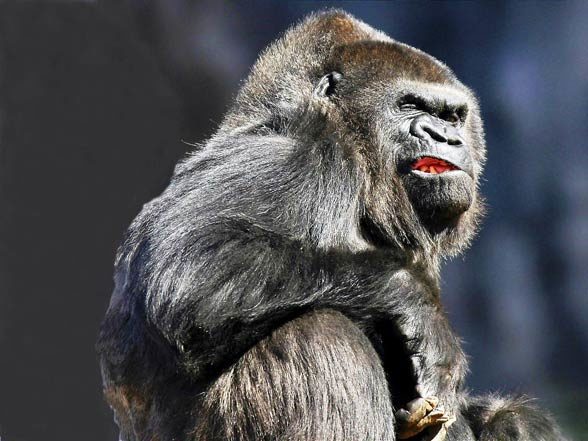
Species
There are two species of gorillas in the world: the eastern gorilla and the western gorilla, and either four or five subspecies. The eastern gorilla species includes the mountain gorilla and the eastern lowland gorilla, while the western gorilla species includes the western lowland gorilla and the Cross River gorilla. The mountain gorilla is the largest of the gorilla subspecies, with only about 1,000 individuals remaining in the wild, making them critically endangered. The eastern lowland gorilla is the largest of the four subspecies of eastern gorilla, and they are also critically endangered. The western lowland gorilla is the most abundant of all gorilla subspecies, with an estimated population of over 316,000 in the wild, but their overall population is believed to have declined by 60% in the last 25 years. The Cross River gorilla is the most endangered of all gorillas, with only about 250-300 individuals remaining in the wild, spread over 9 isolated areas.
Within the genus, two species, which include 4 subspecies have been classified:
Western gorilla (Gorilla gorilla)
- subspecies: Western lowland gorilla (Gorilla gorilla gorilla)
- subspecies: Cross River gorilla (Gorilla gorilla diehli)
Eastern gorilla (Gorilla beringei)
- subspecies: Mountain gorilla (Gorilla beringei beringei)
- subspecies: Eastern lowland gorilla (Gorilla beringei graueri)
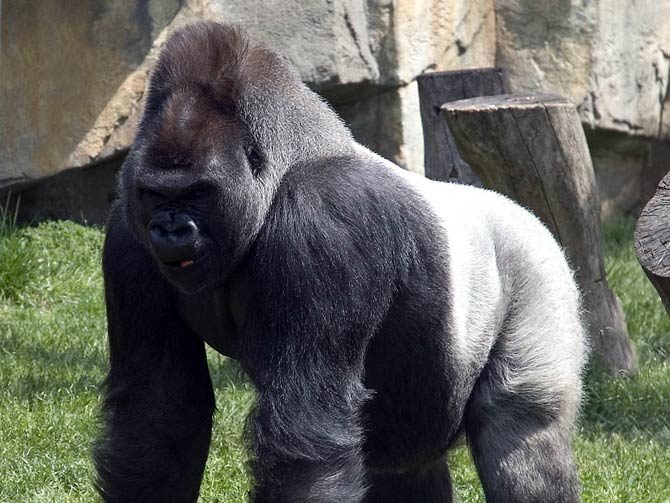
Western and Eastern gorilla
There are two species of gorillas: Western gorilla, living in moist forests of the plains of Gabon, Cameroon and parts of Congo, and Eastern gorilla occurring only in a small area in central Africa, in the Virunga mountains.
Individual gorilla populations inhabit various habitats, ranging from swamps and lowland areas (for lowland gorillas) up to mountain forests at altitudes of 1,600 m (5,250 ft) above sea level and 2,200-4,200 m (7,200 – 13,800 ft) above sea level (for mountain gorillas).
Diet
Gorillas are herbivores, and their diet consists mainly of vegetation such as stems, bamboo shoots, fruits, leaves, seeds, and pith. Western lowland gorillas, however, also eat termites and ants, and break open termite nests to eat the larvae. Gorillas have a broad diet and eat around 200 different types of plants. Their diet varies depending on the plants available in their habitat, and it changes throughout the year. Gorillas have strong chewing muscles and teeth that are much like human teeth, except for the very long, pointed canines of adult male gorillas, which they use for fighting against competing males. Gorillas rarely eat small animals, such as insects, and this constitutes far less than 0.1% of their food.
Ways of communication
Gorillas communicate with each other not only with voice, but also with facial expressions. They are social animals, that’s why they live in groups. Gorillas spend most of their time feeding. As herbivores, their diet primarily consists of leaves, young shoots, and sometimes fruits.
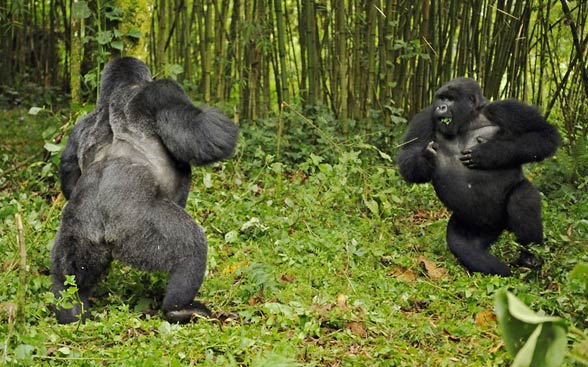
Daily habits
They usually start their day walking around the nest and eating leaves and grass. Then comes the time of rest, during which the gorillas wander in the forest or just sleep. In the late afternoon, they start building nests, from properly bent branches, where they will spend the coming night. The group leader is usually the strongest male who chooses a resting place. When the dominant male gives a signal to build a nest, all members of the group follow its example.
The breast stroke
In special circumstances, the gorilla can stand upright and hit the breast with its shoulders. It may display such behavior when it wants to scare the attacker or while playing.
Threatened with extinction
Gorillas are unfortunately endangered species. Poachers hunt for them mainly because of fur and skulls.
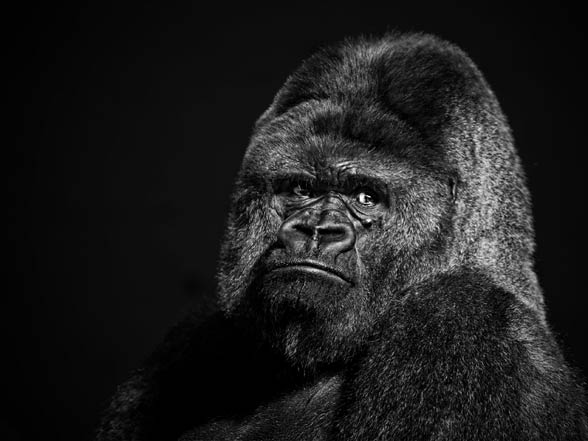
Detailed data and dimensions
Gorillas (Gorilla)
- Height: 1.7 – 1.8 m (5.6 – 6 ft) (females are lower)
- Shoulder span: 2.3 – 2.6 m (7.5 – 8.5 ft) (shorter in females)
- Weight:
- males: 135 – 180 kg (298 – 397 lb), record 230 kg (507 lb)
- males in captivity: up to 270 kg (595 lb)
- females: 68 – 113 kg (150 – 249 lb)
- Arm span: 2.3 – 2.6 m (7 ft 7 in – 8 ft 6 in)
- Lifespan: 35 – 40 years in the wild, 50 years and more in captivity (the oldest gorilla was 54 years old)

Gorilla – curiosities
- Gorilla is the biggest living ape.
- Gorilla is able to lift a weight of 980 kg (2,160 lbs).
- There are only approx. 300 Cross River gorilla living in freedom.
- Males have silver backs.
- The span of its arms may exceed 2,5 m (8.2 ft).
- Females and juveniles often climb the trees. The males usually stay on the ground due to their huge size.
- In captivity, gorillas may live even up to 50 years.
- Gorillas are the largest primates on Earth, with males weighing up to 500 pounds and standing up to 6 feet tall.
- Gorillas share 98.3% of their genetic code with humans, making them our closest cousins after chimpanzees and bonobos.
- Gorillas are herbivores and eat around 200 different types of plants, such as stems, bamboo shoots, fruits, leaves, seeds, and pith.
- Gorillas have strong chewing muscles and teeth that are much like human teeth, except for the very long, pointed canines of adult male gorillas, which they use for fighting against competing males.
- Gorillas are intelligent creatures and have been observed using tools in the wild.
- Gorillas display many human-like behaviors and emotions, such as laughter and sadness.
- Gorillas live in family groups of usually five to 10, but sometimes two to more than 50, led by a dominant adult male, or silverback, who holds his position for years.
- The bond between the silverback and his females forms the basis of gorilla social life.
- Gorillas are diurnal, meaning they perform most of their activities during the day, such as feeding and socializing.
- The biggest threat to gorillas today is the commercial trade in bushmeat, which occurs throughout west and central Africa, where apes are being killed primarily to supply high-end demand for meat in urban centers.
- Gorillas are vital to their ecosystems and play an important role in the food chain.
For further information on gorillas and their habits check out the article: Gorillas.
